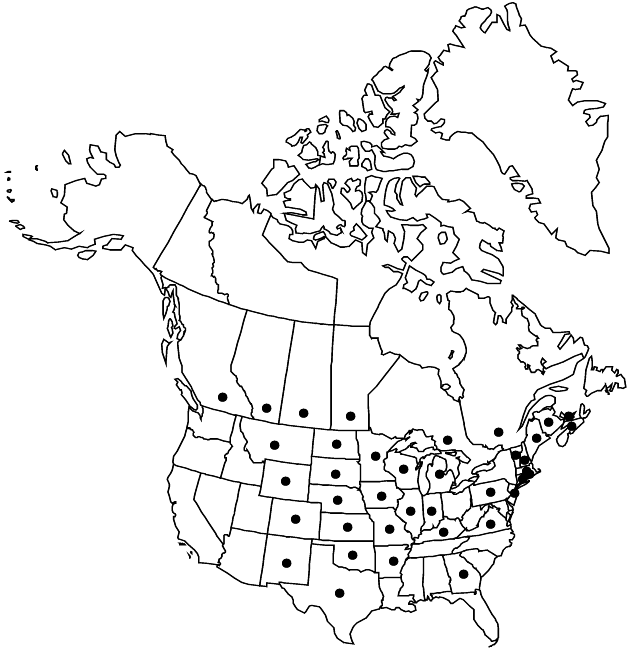Helianthus pauciflorus
Gen. N. Amer. Pl. 2: 177. 1818.
Perennials, 50–200 cm (rhizomatous). Stems erect, scabro-hispid. Leaves mostly basal; opposite, or opposite (proximal) and alternate; petioles 0–1 cm; blades lance-ovate to oblong-lanceolate, or rhombic-ovate to lance-linear, 5–27 × 2–6 cm, bases cuneate, margins serrate to subentire, abaxial faces sparsely hispid, sparsely, if at all, gland-dotted (cauline smaller). Heads 1–10. Peduncles 3–12 cm. Involucres hemispheric, 15–23 mm diam. Phyllaries 25–35, ovate, 6–10 × 3–5 mm, (margins ciliate) apices acute, abaxial faces glabrate to hispid. Paleae 9–10 mm, shallowly 3-toothed to subentire (apices ciliate, hairy). Ray florets 10–20; laminae 20–35 mm (abaxial faces usually gland-dotted). Disc florets 75+; corollas 6.5–7 mm, lobes usually reddish, sometimes yellow; anthers dark, appendages dark (style branches yellow). Cypselae 5–6 mm, glabrate; pappi of 2 aristate scales 4.5–5 mm plus 1–4 smaller aristate scales 0.3–2 mm. 2n = 102 (subspecies unknown).
Distribution

North America.
Discussion
Subspecies 2 (2 in the flora).
Variation within Helianthus pauciflorus is complex and is complicated by hybridization with H. tuberosus. Hybrids with H. tuberosus are known as H. ×laetiflorus, which is frequently cultivated.
Selected References
None.
Key
| 1 | Plants 80–200 cm; leaves usually alternate distally, blades oblong-lanceolate to lance-ovate, 8–27 cm, apices acuminate | Helianthus pauciflorus subsp. pauciflorus |
| 1 | Plants 50–120 cm; leaves opposite, blades rhombic-ovate to lance-linear, 5–12 cm, apices acute or obtuse | Helianthus pauciflorus subsp. subrhomboideus |